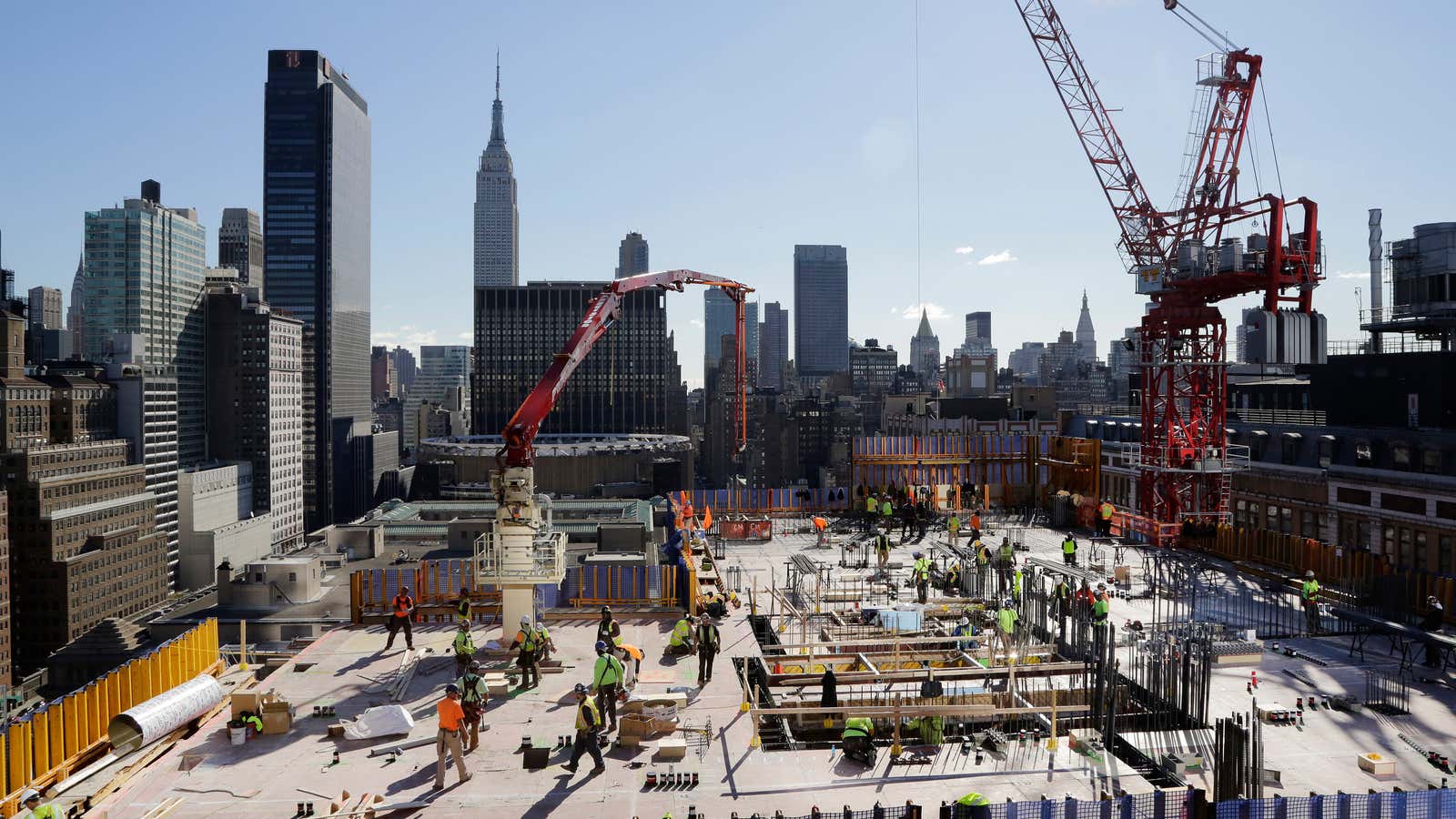Looking to rent an apartment in a major American city? Good luck. Despite forests of cranes transforming New York, Houston, and Washington, DC into giant construction yards, rents are still rising in each of those cities. Development of new apartments is struggling to catch up to a surge of demand from young professionals and aging retirees. Nationally, rental vacancies are at a 30-year low.
It’s tempting to see booming demand for rentals as evidence of resurgent urbanism, changing attitudes toward homeownership, or a more climate-conscious public. However, there may be a far more prosaic cause: We don’t have enough apartments for the people who live in them.
Jordan Rappaport, an economist at the Kansas City Fed, analyzes how demographics drive changes in the housing market. He has identified several trends that are pushing people toward multi-family housing (pdf). Young couples are waiting to start families. Baby-boomers are beginning to retire. The elderly are living healthier, longer lives. Each of these groups often chooses to live in apartments rather than single-family homes. Over the long-term, Rappaport’s projections indicate that downsizing baby boomers, not city-hopping millennials, will be the largest source of new demand.
Developers, eager to meet that demand, are building apartments faster than ever. In 2015, more new apartments began construction than in the three years following the recession. As a proportion of all new housing there hasn’t been so much new multi-family development since the mid 80’s.
Even more unusual, developers are building up. Half of all new apartments are in buildings with more than 50 units. Of all new homes, including single-family houses, 15% are in big buildings. This is the highest concentration of dense apartment construction in the last 45 years.
If this boom had happened 10 years ago, many of the new units would have been built for sale, but the recession killed the condo market. Of all new multi-family units started in 2014, 93% are rental units. The few condos being built are aimed at the ultra-rich, many of whom treat those properties as an investment rather than a residence.
Opinions are divided over whether a long-term shift toward more Americans renting is a good thing, but there is broad agreement that in the short term it will be tough for renters—especially poor and middle-income ones. Many new apartments are luxury units, with amenities tuned to affluent professionals. According to a report from the National Low-Income Housing Coalition only 31 affordable housing units are available for every 100 extremely low-income Americans (pdf).
Rentals are so scarce in San Francisco that software engineers are living in vans and artists are living in wood boxes. The poor—and those unwilling to live in boxes—are being pushed into the suburbs.
So don’t expect a break in your rent.
